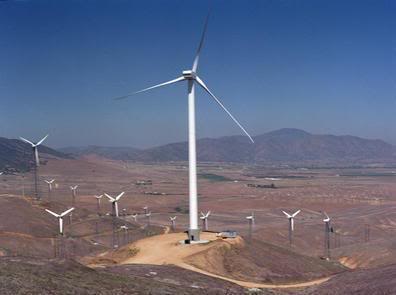One of the attractions of renewable energy is that for most renewable generators (except biomass power plants) the cost of the fuel is free. However, even more so than with a conventional power plant, much of the expense of a renewable generator is concentrated at the beginning of the power plant’s life. The cost of electricity is the sum of the initial, fixed capital costs for building a generator, variable costs of maintenance and fuel, any profit or return on investment, and finance costs divided by the usable energy produced over the lifetime of the generator.
Currently, renewable generators range in cost from expensive (small installations of rooftop or building integrated photovoltaics) to competitive (large onshore wind turbines at windy locations). For renewable energy, the strength of the renewable resources at a given location has a major effect on the price of energy, as the capital cost is approximately the same for areas with higher and lower strength resources, yet the same equipment will produce much more energy in a more favorable location (for wind in particular).

Furthermore, most natural renewable energy flows are relatively diffuse; they have a lower “power density” than the energy flow emitted by a coal or gas fire or a nuclear chain reaction (exceptions are some powerful rivers, tidal flows, and hot geothermal wells). This means that the capture devices for renewable energy flows must, in most cases, be physically larger to take in the same amount of energy as a coal or gas power plant well-supplied with fuel. The large size of the generator means the production and installation of more concrete, steel, silicon, and/or glass as an initial investment. To the chagrin of some renewable energy advocates, the larger size of the installation and the generators involved usually produces a significantly lower cost per unit energy relative to a small installation of the same technology, contradicting the “small is beautiful” philosophy that has become an unquestioned mantra in many quarters.
Despite the initial investment hurdle and current uphill financial battle, setting up a renewable generator in a favorable location pays off in the long term. Using the measure Energy Returned on Energy Invested (ERoEI), which measures the net energy yielded based on the energy input into a process, renewable generators using current technologies return from 20 to 50 times the energy required to manufacture, construct, and maintain them. This number will tend to go up as the renewable industry becomes more efficient: early solar panels in the 1970s may have had an ERoEI of less than one (negative net energy), but now the roll-printed solar cells of the innovative company NanoSolar may return over 150 times the energy required to make them, paying back the energy used to make then in approximately a month. The latter amount is superior to the ERoEI of an oil gusher of high quality crude from a large oilfield; analysts currently believe the ERoEI of our current more “difficult” oil is around five and is decreasing as oil becomes more difficult to extract and is of lower quality.

In current dollar terms, building new renewable generators is for the most part not yet competitive as the future rise in cost of fossil fuels is usually discounted, while the environmental, energy security and ERoEI advantages of renewable generators are not priced into the energy they generate. Energy from existing renewable generators that have already been paid for (older hydroelectric dams or geothermal wells) produce energy at a very low cost.
Among new generators, large on-shore wind generators in windy areas produce energy at 6 to 8 cents/kWh which is competitive with new fossil generation. However, the value to the power system of electricity produced from wind, which often does not blow in sync with energy demand, is less than that produced using an energy store like coal, natural gas, biomass, stored thermal energy of the sun, hydroelectric reservoirs and pumped storage, large batteries, and other clean energy storage devices.
Most of the renewable generators and storage devices required to build the renewable electron economy currently produce what might be called “mid-priced energy,” energy that is neither dirt-cheap nor prohibitively expensive. The single generation technology that is the most rapidly deployable that can replace the services of coal and natural gas power plants is solar thermal with storage, which can produce power for somewhere between $.15 and $.20/kWh, inclusive of reasonable profit, in the desert Southwest of the United States.
Large-scale photovoltaic arrays can produce energy at around $.25/kWh when the sun is shining in the Southwest. These prices will go down substantially once we have created consistent demand for these technologies. Small installations of photovoltaics on rooftops remain relatively expensive, producing energy at somewhere between $.45 to $.60/kWh, because design and installation costs are spread over a very few solar panels. Geothermal wells will produce at variable costs from $.10/kWh to $.25/kWh for more difficult, lower temperature resources.
In general these more controllable or predictable renewable generators produce electricity from anywhere from a few cents to several tens of cents more than what utilities want to pay per kWh for wholesale generation in current markets. The gap between the market, “buy” rate and the economically feasible “sell” rate for renewable plant developers is then the object of most renewable energy promotion policies throughout the world. Building up these industries will in most cases drive the cost of energy down as economies of scale are achieved and technologies develop.
Next: how do we build energy infrastructure?

